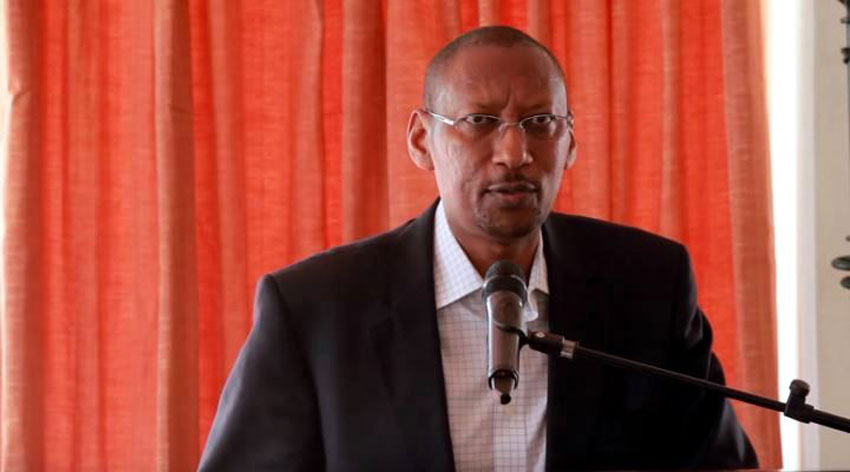
Central Bank Governor John Rwangombwa
Rwanda government is celebrating the festive season in style following a significant cut on trade deficit in 2017.
Central Bank Governor John Rwangombwa said today that the last 11 months of 2017 has seen the country reduce its trade deficit by 21.1% compared to the same period last year.
The reduction, according to Rwangombwa is attributed to a significant increase in formal exports value by 53.7% and a decrease in formal imports value by 1.4%.
In the first 8 months of this year, trade imbalance had reduced by 24.9% following a decrease in formal imports by 7.9% in value and an increase in formal exports value by 44.9%.
Eelier, the 2016 monetary policy and financial statement had indicated that the country’s trade deficit dropped by 5.9% in 2016 (representing $1649.7m) from $1752.5m in 2015.
Rwangombwa says the country’s economy grew by 8.0% in the third quarter of this year compared to 4.0% (2017Q2) and 5.4% in the third quarter of 2016.
The continued reduction in trade imbalance had been triggered by government’s efforts to promote Made in Rwanda products.
To continue with the trend, Rwangombwa today announced the key outcomes of the Monetary Policy Committee (MPC) and Financial Stability Committee (FSC) quarterly meetings, that the bank will reduce repo rate to 5.5% in the first quarter of 2018 from the current 6%.
“The MPC has decided to reduce the key repo rate to 5.5% in 2018 Q1 from 6% in the previous quarter to continue financing of the economy,” Rwangombwa told journalists.
Repo rate is the rate at which Central Banks lend to commercial banks. The rate determines whether Central Bank encourages or discourages banks to borrow.
For instance, in case of inflation, the Central Bank can decide to increase its repo rate to discourage banks to borrow and reduce money supply in the economy.
Meanwhile, both Financial Institutions and micro finances have registered profits as a result of financing different projects.
According to the report presented today, the overall Rwandan outstanding credit to the private sector expanded by 12.3% in November 2017 compared to 8.8% in the same period of 2016 while total new authorized loans grew by 7.7% from 4.5% in the corresponding period of 2016.
Total banking system net profit after tax was Rwf30.6 billion in September while the microfinance sector and the insurance sector had Rwf3.1billion and Rwf29.4 billion respectively.
Total assets of the banking sector increased by 17% (year-on-year) in September 2017 to Rwf2.6 trillion while that of the microfinance sector increased by 9.5% to Rwf242.4 billion.
As at end of September 2017, Rwangombwa said, “The Capital Adequacy Ratio of banks and microfinance institutions stood at 22.2% and 36% respectively.”
On the other hand, the level of non-performing loans (NPL) ratio in Banks stood at 7.7% while that of Micro Finance Institutions declined to 8% as of September 2017.

